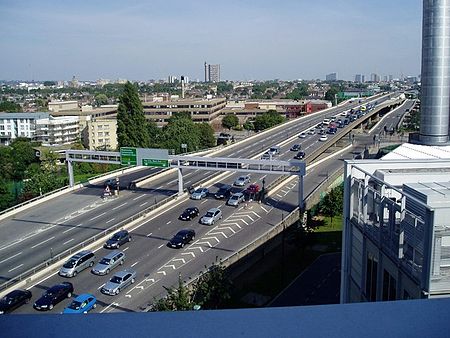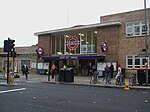Westway (London)

The Westway is a 2.5-mile (4 km) elevated dual carriageway section of the A40 trunk road in West London running from Paddington in the east to North Kensington in the west. It connects the London Inner Ring Road to the West London suburbs. The road was constructed between 1962 and 1970 to connect the proposed London Ringways motorway scheme to Paddington, and opened as the A40(M). It was the first urban motorway project in London and attracted criticism for the lack of care over the environment, the well-being of local residents and communities, and handling those whose homes would be demolished. Road protests increased following its opening. In 2000, the Westway was downgraded to an all-purpose road after the formation of Transport for London. The road has become a significant London landmark and has been noted in several works of popular culture.
Excerpt from the Wikipedia article Westway (London) (License: CC BY-SA 3.0, Authors, Images).Westway (London)
Crowthorne Road, London North Kensington (Royal Borough of Kensington and Chelsea)
Geographical coordinates (GPS) Address Phone number Website Nearby Places Show on map
Geographical coordinates (GPS)
| Latitude | Longitude |
|---|---|
| N 51.515555555556 ° | E -0.22083333333333 ° |
Address
Westway Sports Centre
Crowthorne Road 1
W10 6RP London, North Kensington (Royal Borough of Kensington and Chelsea)
England, United Kingdom
Open on Google Maps







